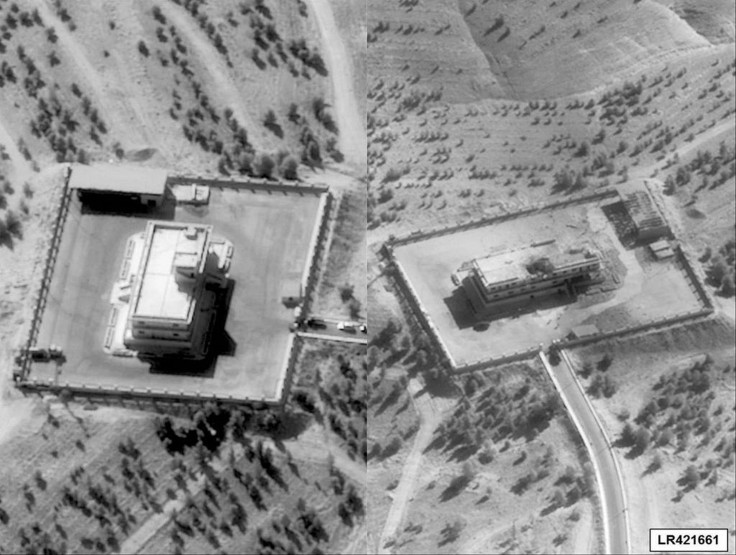Islamic State Airstrike: Watch Video Of ISIS Cash Compound Bombed In Iraq

A recently released U.S. Department of Defense video shows bombers this week targeting a cash stockpile of the Islamic State group, aka ISIS. The attack blew up what could be millions of dollars, the Associated Press reported. The black-and-white video released Friday was taken from Mosul, Iraq, and shows the ISIS compound being hit with two 2,000-pound bombs, releasing clouds of smoke and money into the air.
While the airstrike likely blew up millions of dollars, it is unknown exactly how much was destroyed. U.S. officials said the cash airstrike, along with other attacks on ISIS’ gas and oil production, should make the group feel a financial strain.
Gen. Lloyd Austin, head of the U.S. Central Command, said ISIS "needs those funds to pay their fighters, to recruit new fighters and to conduct their various maligned activities," CNN reported. "You know, we said from the outset of this campaign that to defeat ISIL [another name for ISIS], we're going to have to take away its ability to resource [itself]."
U.S. and coalition forces in November started going after the terror group’s oil-smuggling operations, one of its main sources of revenue, NBC News reported. By July, it was discovered ISIS was making $8 million to $10 million from oil smuggling a month, about three times as much money as officials previously thought.
First on CNN: The Pentagon releases a video of the U.S. bombing "millions" in #ISIS cash https://t.co/wRbFqMQTSm https://t.co/OygVkQbaUW
— CNN Politics (@CNNPolitics) January 16, 2016Bombs have since been dropped on ISIS oil fields and tanker trucks. The proceeds from this oil go toward ISIS fighters’ monthly salaries.
Officials said one or two cash facilities held by ISIS had been targeted prior to this week’s bombing, Fox News reported. In territory controlled by ISIS, however, the terror group has a taxation system to ensure it has a steady stream of revenue outside its oil racket. The taxation system is said to rake in hundreds of millions a year.
© Copyright IBTimes 2025. All rights reserved.





















